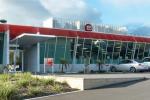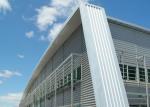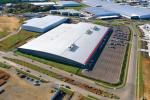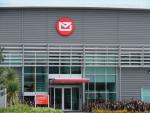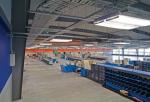NZ Post Auckland Mail Centre
By Graham Hepburn
Changes to the way people are using the postal service were part of the reason NZ Post undertook a review of its operations.
The advent of email, the rise in internet shopping and the growth of courier services have radically altered the landscape.
Coupled with the company’s desire for greater use of automated mail processing, it soon became apparent that NZ Post needed to upgrade and expand their mail sorting centres.
The company decided to upgrade three premises and build three new mail processing centres at Hamilton, Christchurch and Auckland.
The new mail centres would provide the company with purpose-designed premises, capable of housing new and more efficient mail sorting machines that could process up to 70 per cent of mail – as opposed to the 30 per cent automation the old machines were achieving. The decision was made to bring in six new sorting machines from Japan, with three going to the Auckland site.
The Auckland Mail Centre at Highbrook Estate in East Tamaki was the biggest project at 15,700sq m and with a processing hall of 8000sq m, about the size of two football fields.
Created with sustainability in mind by architects Warren and Mahoney, the Auckland Mail Centre was finished in June and shares a similar plan to its sister buildings, which vary only in size.
Warren and Mahoney director Peter Marshall says using the same model for all three centres created efficiencies for everyone involved.
“In essence, we saw that the form of the building was dictated by the need to find a cost-effective solution to New Zealand Post’s needs within a tight timeframe. The function of the three buildings was the same, so in planning terms the same model was appropriate.”
Time was of the essence due to the impending arrival from Japan of the new mail sorting equipment and installation teams.
Principal project manager David McLernon, from Octa Associates, says working with the same plan for three different buildings is “not the norm”, but worked effectively for NZ Post.
“They wanted the same national design with a single architect and, where possible, national subcontractors as well.”
In accordance with Warren and Mahoney’s principles, the buildings were designed along sustainable lines, aiming for a four-star green rating.
Warren and Mahoney used an in-house matrix to analyse sustainable features according to cost, practicality, appropriateness, benefits and philosophical fit.
Marshall says while many sustainable elements can be introduced with little cost, achieving a high green rating can add up to five percent to the cost of a building. Although that cost can be regarded as an investment in the future. “In another generation, a building will depreciate more quickly if a good green rating is not in place.”
Prominent acrylic panels at the entrances outline the building’s sustainable features, which include unpainted Zincalume® cladding for the roof and Colorcote ® ZR8TM wall cladding.
The centre has an area where mail trucks drop off mail, which is then transferred to a staging area and taken by trolley into the large sorting hall. Offices occupy a mezzanine level. A draped curved Zincalume® roof gives a clean, modern profile.
A break-out area was created on the opposite side of the building from the cafeteria, to enable workers on that side to relax without having to trek across the vast floor.
To allow for more natural light in the processing hall – and a view outside during the day – one entire wall of each building is glass. Inside, lights are zoned, with sensors, timers and switches to ensure lights only come on when needed.
Cheerful blocks of bright blue, green and orange help break up the large space.
“Getting the right colours was very important to the client,” Marshall says. “Blue is associated with the process leaders area, and picks up the colour off the sorting machine, green is associated with relaxation in the cafeteria and breakout area, and orange signifies administration.”
Post-tensioned concrete ensures a crack-free floor, critical in a facility where trolleys must be able to move smoothly. A perforated metal acoustic ceiling absorbs sound.
Other elements that contribute to sustainability and low maintenance include the use of solar water heating, low energy equipment such as dishwashers, fridges and light fittings, Environmental Choice paint systems, linoleum instead of vinyl wherever possible, and recyclable carpet tiles.
The buildings are not only sustainable but are also ‘maintenance friendly’ to allow NZ Post to concentrate time and money on their core business.

